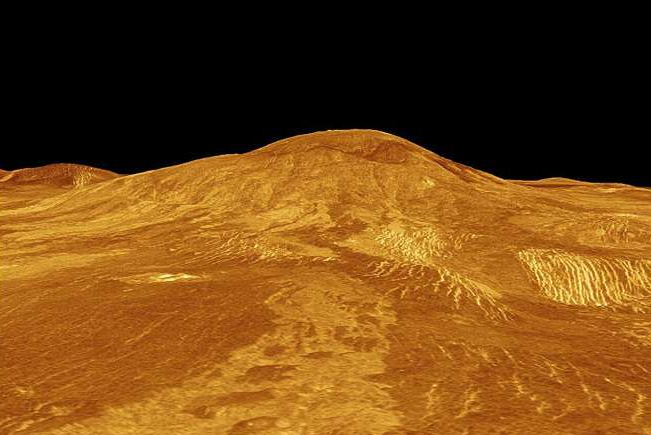Newly Uncovered Volcanic Activity on Venus

May 27, 2024
feature
This article is a result of a thorough editorial process at Science X, featuring:
- Fact-checking
- Peer-reviewed publication
- Trustworthy sources
- Proofreading
This work was written by David Appell from Phys.org.
Recent analysis of old data from Venus suggest that the planet might still have active volcanoes.
The researchers, led by David Sulcanese from Università d'Annunzio in Pescara, Italy, used data from a radar mapping of the surface of Venus obtained during the early 1990s. The data revealed signs of volcanic lava flow in two areas.
This find indicates the possibility of ongoing volcanic activity on Venus, which further backs up previous indirect evidence supporting the same hypothesis.
The research has been published in the Nature Astronomy journal.
Venus, often termed as 'Earth's twin sister,' early sense is only slightly smaller than Earth. However, it has a CO2-rich atmosphere that results in a massive greenhouse effect, causing a surface temperature of approximately 465°C (870°F).
Absolute billions of years ago, Venus was probably very similar to Earth, with liquid water. This changed with increasing sunlight and volcanic activity, leading to a runaway greenhouse effect after all water evaporated.
In the present, Venus appears to be a parched, scorching, lifeless planet blanketed by sulfuric acid clouds.
The Magellan spacecraft, launched from NASA's space shuttle in 1989, gathered data while orbiting Venus between 1990 and 1992. The spacecraft kept as close as 295 km above the surface of the planet.
The scientists analyzed the first cycle of radar scans and compared them with radar scans from the third cycle, by making some adjustments such as correcting backscatter for various viewing angles.
Two areas were observed. The first region includes lava flow features on the western side of Sif Mons, which is a shield volcano. The second area was the western part of Niobe Planitia, known for its flatness, numerous volcanos, and volcanological material.
The researchers concluded that the roughness and composition (surface scattering properties) of Venus most likely changed between the scans. This indicates probable new volcanic activity during the Magellan mission.
Because the study involved only about 16% of the planet's total surface, there is the possibility of more such findings, said lead author Sulcanese.
This supports previous scientific observations suggesting recent volcanic activity on Venus.
Estimates suggest that Venus might experience up to 42 volcanic eruptions every year, with around 20 long-lasting eruptions. The latest findings suggest there might be around 120 distinct eruptions per Earth year.
The research also came up with estimates for volcanic flow rates based on terrestrial values and known flow areas for both regions.
Further results suggest that volcanic activity on Venus might be similar to that of Earth, which means it might be more volcanically active than previously believed.
'Future missions like VERITAS and EnVision will revisit Venus's surface,' said Sulcanese, 'allowing us to compare their data with the Magellan mission's images. This will enable us to identify surface changes over a period of more than 40 years.'
Journal information: Nature Astronomy
© 2024 Science X Network




